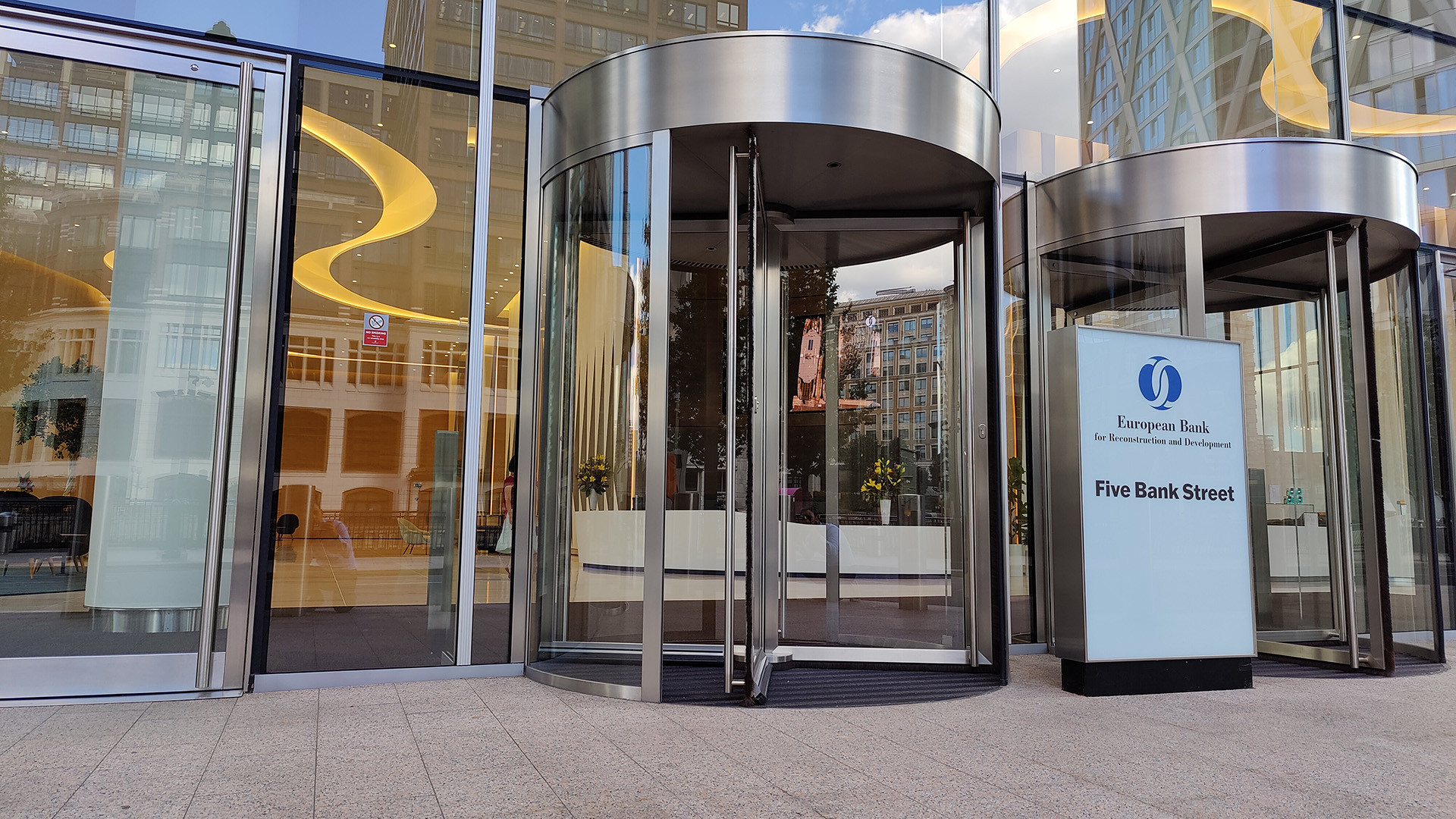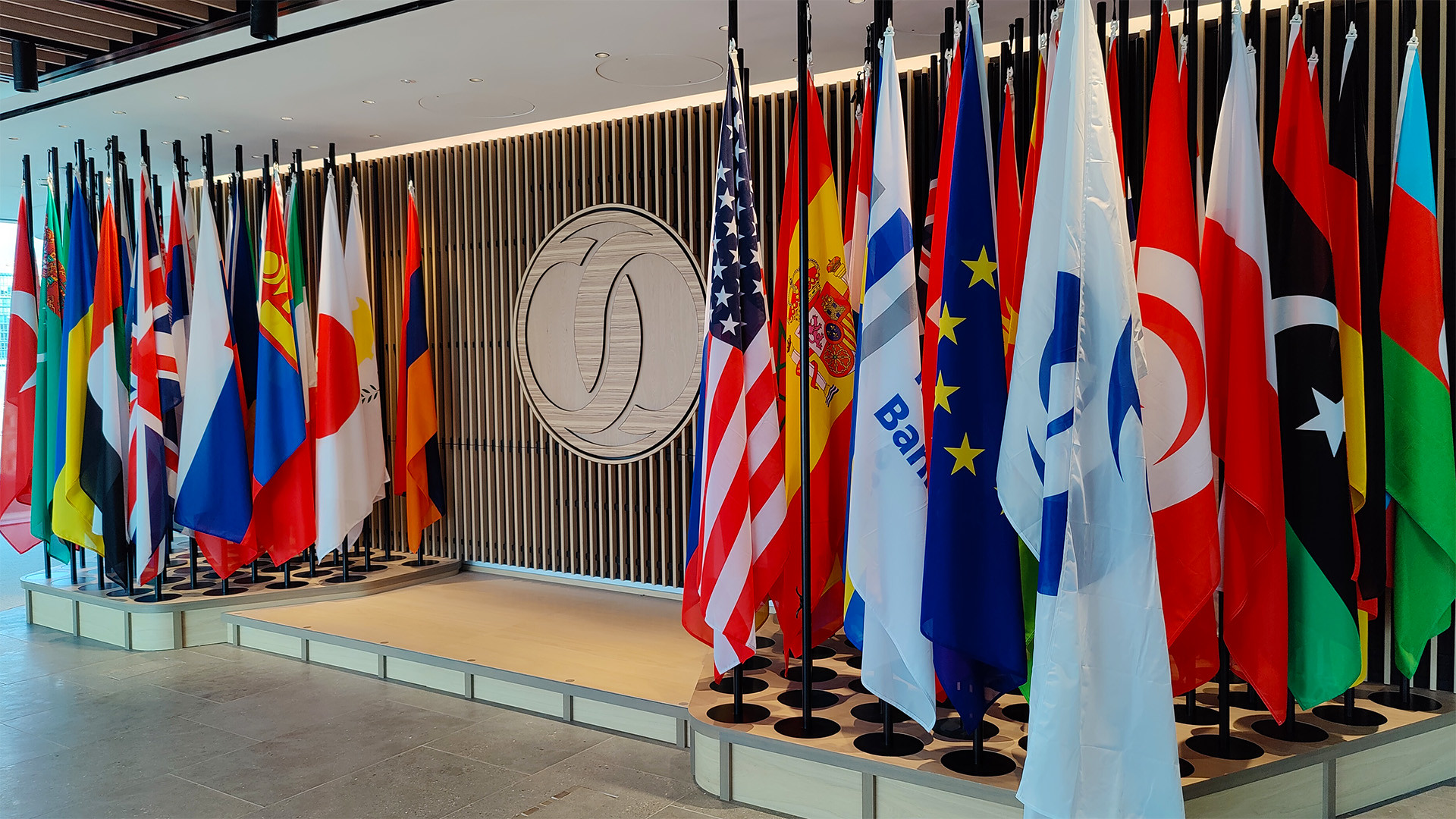The European Bank for Reconstruction and Development (EBRD) is an international financial institution that is primarily owned by European countries and primarily focuses on funding private sector projects and the implementation of free market legislative frameworks in developing nations in Europe, North Africa, and Asia.
The EBRD was founded in 1991 and was initially focused on funding projects in countries in Eastern Europe that were transitioning from soviet-type to a market economy.
In more recent years, however, the EBRD has expanded its mission to include funding projects in Central Asia, Egypt, Jordan, Morocco, Lebanon, and Turkey and its goals to include sustainable (“green”) economic development, safeguarding nuclear energy sites, upholding political and human rights, and combating pandemics.
To date, the EBRD has invested more than €170 billion in more than 6,400 projects across Europe, Asia, and North Africa.
What Is the EBRD?
On June 4, 1989, the trade union known as Solidarność (Solidarity) in Poland won a large number of seats in that country’s first (partially) free elections since the imposition of Communism at the end of World War II. In November, the wall in Berlin that separated West Germany from East Germany was dismantled, leading to a series of events that culminated in the end of Communist rule across Europe shortly thereafter.
Inspired by these events in 1989, French President François Mitterrand began formulating the idea of a “Bank for Europe” that would emulate the post-World War II Marshall Plan in funding projects to help stimulate economic growth and implement free-market practices in Central and Eastern Europe and thus help unite the continent.
On October 25, 1989, Mitterrand publicly announced his plan, and it was not long before Prime Minister Thatcher of Britain and Chancellor Kohl of Germany agreed to Mitterrand’s idea for creating a “Bank of Europe,” however it was Prime Minister Schlüter of Denmark who actually coined the name “European Bank for Reconstruction and Development.”

On December 9, 1989, the European Council formally approved the creation of the EBRD. Headquartered in London, the EBRD began operations on April 15, 1991, and now employs some 3,000 people.
Initially, the EBRD focused on using membership funds to finance private sector projects in order to assist formerly Communist countries in Central and Eastern Europe in transitioning to an open market economy. The EBRD also played a major role in writing and implementing banking system reforms, deregulating prices, and creating legal frameworks to protect private property rights in these formerly Communist nations.
What Does the EBRD Do?
Although initially focused exclusively on creating legal frameworks for and injecting private sector capital into formerly Communist nations in Europe to rapidly transition them to the free market economy system, the EBRD has since branched out into a number of different arenas and has significantly expanded the scope of its mission.
Today, the EBRD funds public and private sector projects in the agribusiness, energy, equity, manufacturing of both heavy and light industry, the production of goods, municipal infrastructure, natural resource extraction industry, nuclear safety (including waste treatment), property development, tourism, telecommunications and media, technology, and transportation sectors.
In recent years, the EBRD has also financed projects worth over €21 billion to assist countries recovering from the economic impact of the Covid-19 pandemic as well as injecting capital into several state-run railway, natural gas, and electricity companies in Ukraine. The EBRD is also a partner in the “Solidarity Lanes Initiative” to assist in Ukraine’s efforts to export its agricultural and manufacturing products.
Who Owns the EBRD?
Despite its name, the EBRD is an international financial institution with shareholders from 71 countries around the world, the largest of which is the United States.
The top ten shareholders of the EBRD in terms of capital subscription are (in order): the United States, France, Germany, Italy, Japan, The United Kingdom, Russia, Canada, and Spain with tenth place being a tie between the European Investment Bank (EIB) and the European Union.

The newest shareholder of the EBRD is Algeria, which became a member in October 2021. The Czech Republic (Czechia) is the only country which has “graduated” from being a recipient of EBRD funds to becoming a shareholder of the EBRD.
Despite being similar in name to the European Investment Bank (EIB) and the Council of Europe Development Bank (CEB), both of which are European Union institutions, the EBRD is not owned or directly controlled by the European Union, although the EU (government) and EU member nations combined own the largest share of the EBRD.
The EBRD has a Board of Governors which is composed of one representative from every member. The Board of Governors elects 23 individuals (who cannot be on the Board of Governors) to be on the Board of Directors, whose function is to direct the general operation of the EBRD.
Besides the capital provided to the EBRD by its shareholders and the profits accruing from the bank’s investments, the EBRD also receives donations, primarily from large bilateral institutions such as the Global Environment Facility, the Climate Investment Funds, the European Union, and the Green Climate Fund.
What does EBRD Stand For?

EBRD is an acronym that stands for the European Bank for Reconstruction and Development. Although initially created to exclusively fund development projects in Europe, the EBRD has financed a significant number of projects across Asia and North Africa, but its core focus remains the European continent.
What Are the EBRD’s Goals?
At the outset, the EBRD’s sole goal was to integrate the economies of formerly Communist nations in Europe into the free market system, but the bank’s mission has dramatically expanded over the past 20 years.
Today, the EBRD’s overarching goals are to promote neoliberal economic policies, mediate in commercial disputes, create and implement market economy financial frameworks and legislation, protect private property rights, uphold political and human rights, promote and strengthen gender-based rights and inclusion, and to combat climate change through sustainable energy production, “green” economic initiatives, and the decarbonization of industry.

